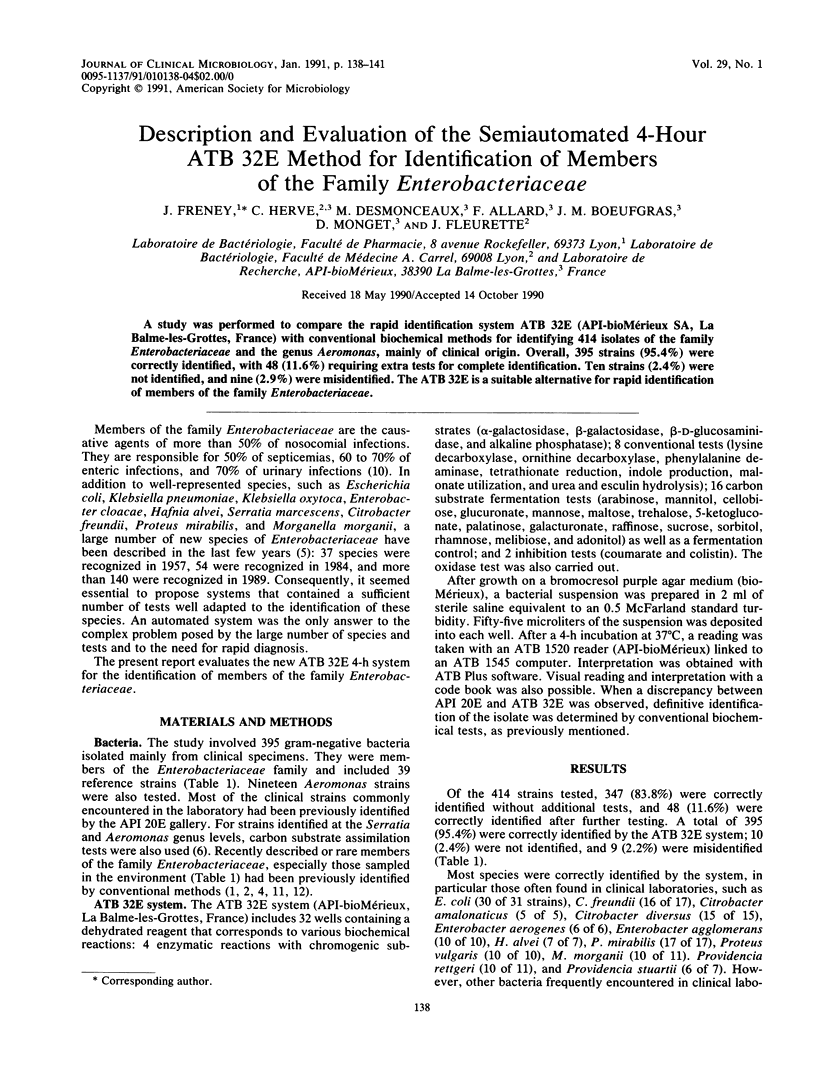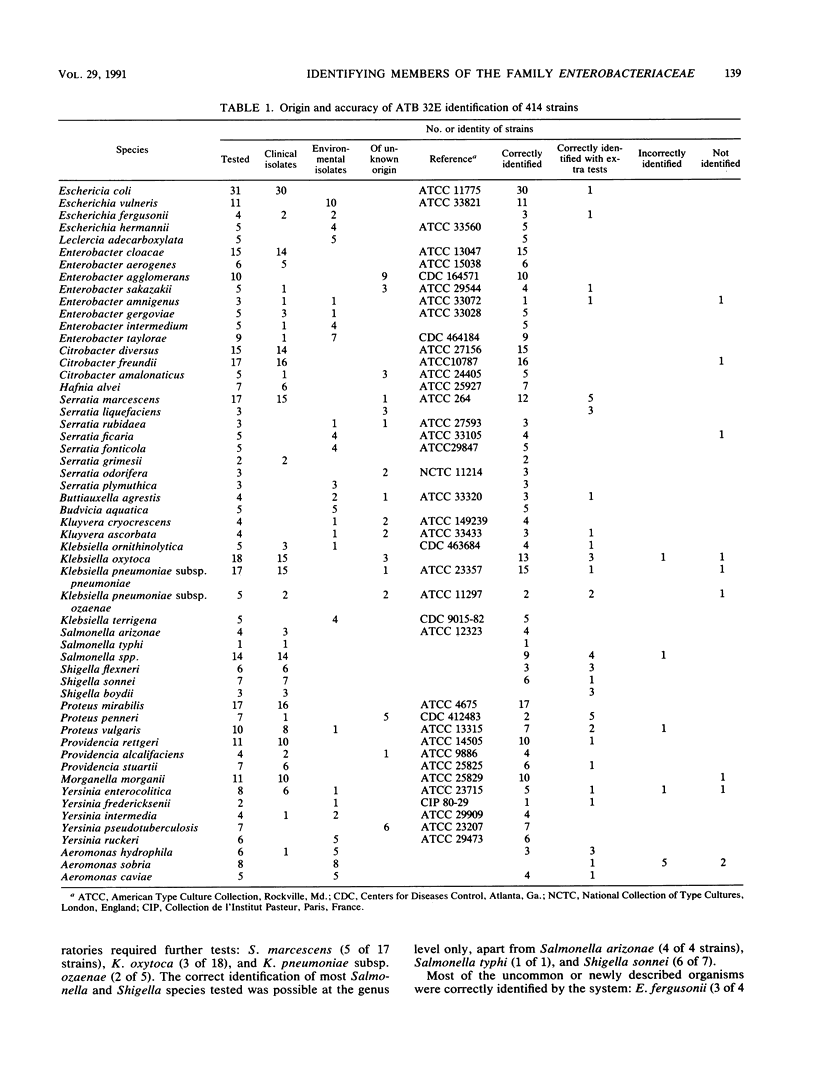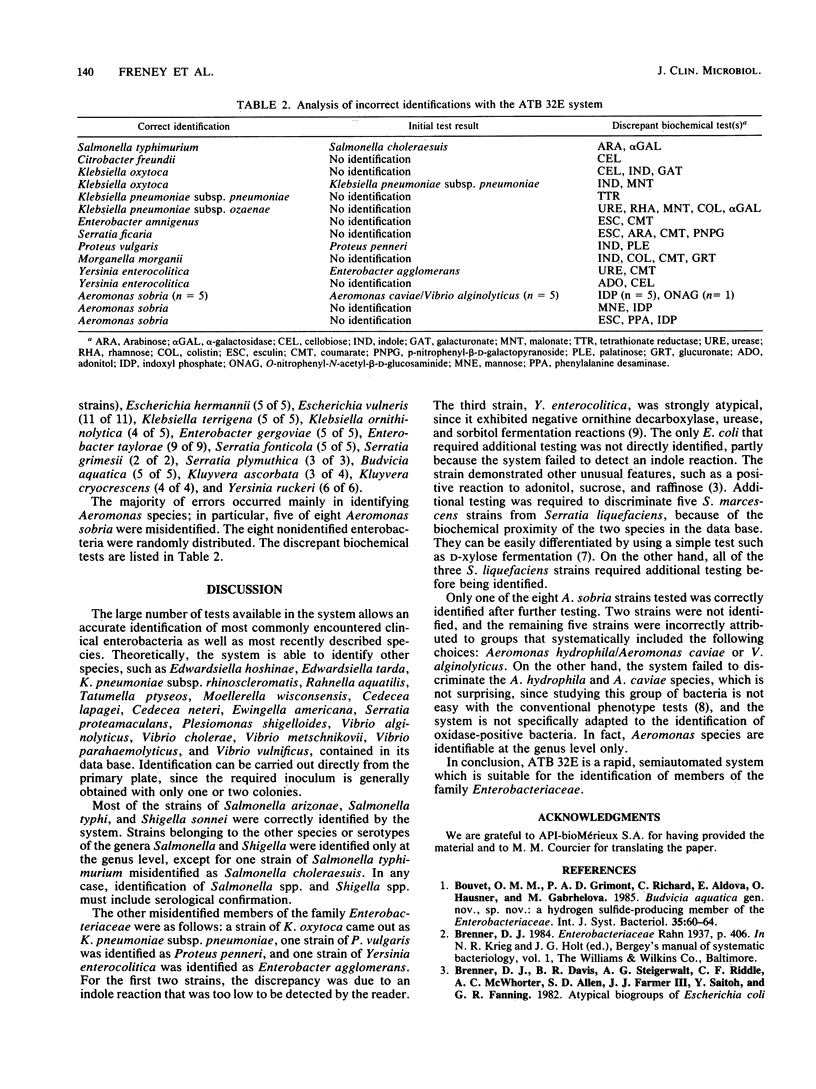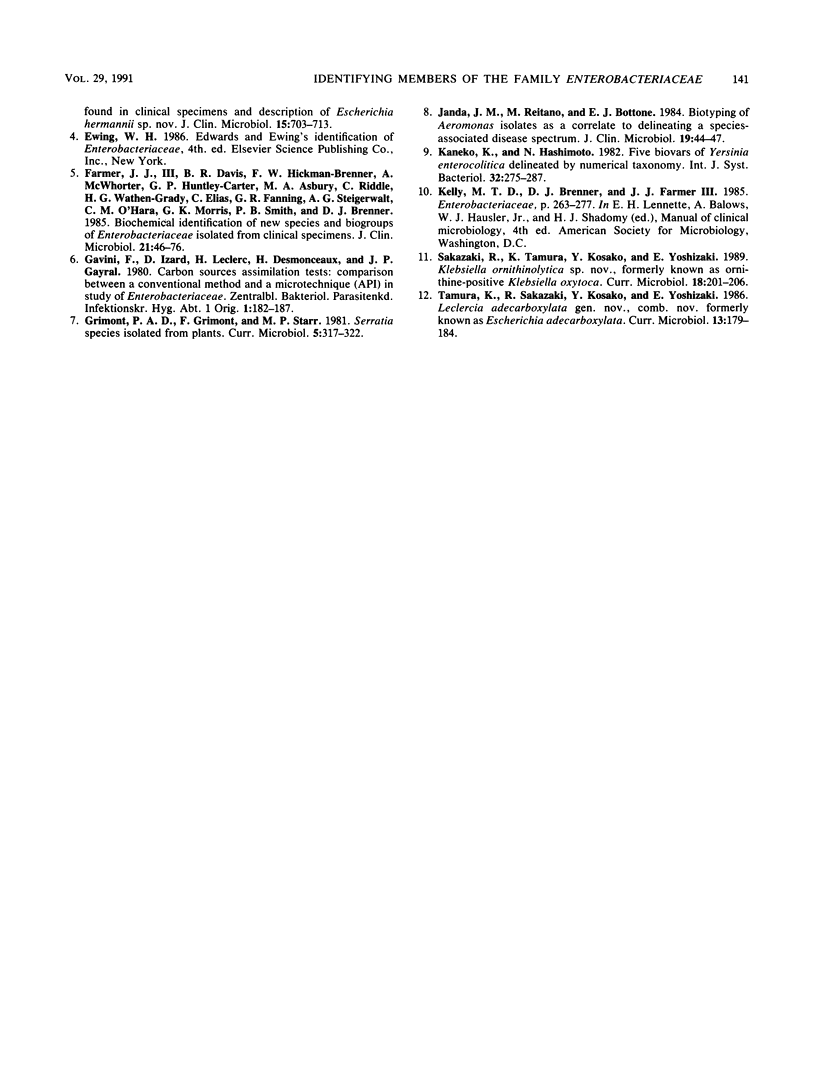Abstract
A study was performed to compare the rapid identification system ATB 32E (API-bioMérieux SA, La Balme-les-Grottes, France) with conventional biochemical methods for identifying 414 isolates of the family Enterobacteriaceae and the genus Aeromonas, mainly of clinical origin. Overall, 395 strains (95.4%) were correctly identified, with 48 (11.6%) requiring extra tests for complete identification. Ten strains (2.4%) were not identified, and nine (2.9%) were misidentified. The ATB 32E is a suitable alternative for rapid identification of members of the family Enterobacteriaceae.
Full text
PDF



Selected References
These references are in PubMed. This may not be the complete list of references from this article.
- Brenner D. J., Davis B. R., Steigerwalt A. G., Riddle C. F., McWhorter A. C., Allen S. D., Farmer J. J., 3rd, Saitoh Y., Fanning G. R. Atypical biogroups of Escherichia coli found in clinical specimens and description of Escherichia hermannii sp. nov. J Clin Microbiol. 1982 Apr;15(4):703–713. doi: 10.1128/jcm.15.4.703-713.1982. [DOI] [PMC free article] [PubMed] [Google Scholar]
- Farmer J. J., 3rd, Davis B. R., Hickman-Brenner F. W., McWhorter A., Huntley-Carter G. P., Asbury M. A., Riddle C., Wathen-Grady H. G., Elias C., Fanning G. R. Biochemical identification of new species and biogroups of Enterobacteriaceae isolated from clinical specimens. J Clin Microbiol. 1985 Jan;21(1):46–76. doi: 10.1128/jcm.21.1.46-76.1985. [DOI] [PMC free article] [PubMed] [Google Scholar]
- Janda J. M., Reitano M., Bottone E. J. Biotyping of Aeromonas isolates as a correlate to delineating a species-associated disease spectrum. J Clin Microbiol. 1984 Jan;19(1):44–47. doi: 10.1128/jcm.19.1.44-47.1984. [DOI] [PMC free article] [PubMed] [Google Scholar]


